Mystery of the Bobruisk airfield, June 1941 year
The study of such photographs led us to the idea of systematizing and analyzing collected together from various sources photographs of Soviet aircraft, according to one or another feature, we assigned to Bobruisk airfield, captured by the advancing Wehrmacht units already in June 1941 of the year. We hope that our work will be of interest to readers and that this is not the last publication on this topic.
CHRONICLE OF EVENTS 22-28 JUNE 1941 OF THE YEAR
According to the 13th Bomber Fund aviation Division (hereinafter BAA) Major General F.P. Polynin in the Central Archive of the Ministry of Defense of the Russian Federation it is known that on June 22, 1941 airplanes of the division, the 24th Red Banner High-Speed Bomber Aviation Regiment (hereinafter SBAP), lieutenant colonel P.I. were based at Bobruisk airport. Melnikov and the 97th neighbor of the Bomber Aviation Regiment (hereinafter BBAP) of Major E.L. Ivantsova, also courses of flight commanders (hereinafter KKZ). The courses trained not only pilots of the 13th BAA, but also the pilots of the 13th, 16th and 39th SBAP, belonging to the 9th 11th and 10th mixed aviation divisions (SAD) of the Air Force of the Western Special Military District (ZAPOVO ) The course was led by Captain Nikiforov.
In addition, the morning 22 June Field Bobruisk airfield accumulated distilled in a border shelf planes: four IL-2, intended for 74 Attack Aviation Regiment (hereinafter ShAP) 10-th GARDEN, 21 Pe-2, already included in 16-th SBN 11 th GARDEN and seven Pe-2, also already included in the 13 st SBAP 9 th GARDEN. As a result of subsequent events, the airplanes destined for the 74-th SHAP and the 13-th SBAP fought as part of the 13-th BAA (not less than two IL-2 and nine Pe-2), and to the “Pawns” part of the 16-th SBAP all -the crews of one of the squadrons of this regiment arrived.
On the first day of the war, the 24-th, 121-th, 125-th and 130SBAPs planes, as well as the courses of the commanders of the units, bombed German territory. Soviet pilots bombed airfields, depots, troop accumulations and artillery positions in the areas of Biala Podlaski, Siedlc, Kossov and Suvalki. A total of 127 combat sorties were made, 636 FAB-100, 102 FAB-504 were dropped.
Bombers carried out combat missions without fighter cover to the base areas of the main forces of German fighter aircraft and the location of anti-aircraft batteries. ' Despite such difficult conditions, all groups fulfilled their tasks and made aimed bombing at the attacked objects, however, unfortunately, the losses were very serious. Until 45,% of crews did not return to their airfields.
| COMBAT COMPOSITION OF THE PARTS OF THE 13 BAD SUPPLEMENTARY SUBDIVISION AT THE BOBRUIS AERODROME 22 OF JUNE 1941 OF THE YEAR | |||||
| A type | Good | Faulty Total | Crews | ||
| Management | Sat | 1 | - | 1 | 1 |
| In-2 | 1 | - | 1 | - | |
| 24 SBAP | Sat | 28 | 10* | 38 | 50 |
| CSS | 2 | 3 | 5 | - | |
| In-2 | 2 | 1 | 3 | - | |
| 97 BACD | Su-2 | 36 | 14** | 50 | 51 |
| CSS | 1 | - | 1 | - | |
| In-2 | 4 | - | 4 | - | |
| KKZ | Sat | 19 | - | 19 | 19 |
| Total | Sat | 48 | 10 | 58 | 70 |
| Su-2 | 36 | 14 | 50 | 51 | |
| CSS | 3 | 3 | 6 | - | |
| In-2 | 7 | 1 | 8 | - | |
| TOTAL | 94 | 28 | 122 | 121 | |
** 14 Su-2 collected but not commissioned.
During the day, the planes of at least three more Soviet air regiments "made visits" to the Bobruisk airfield. The first were 16 SB of 39 SBAP 10 SAD (according to other data of 17 SB), who flew to Bobruisk around noon, since the Pinsk airfield, on which the 39 SBAP was based, was subjected to massive attacks of 2 airplanes of the 22 squadron, which had 24 SBP based on XNUMX SBN. These cars XNUMX June already subordinated the commander of the XNUMX SBAP in the evening and later they operated as part of this regiment.
The second were the two groups of 121 -th SBAP: nine SBs from the 4 squadron (AE) and two SBs from 5, which are near 15: 00, after completing their combat sortie, made an intermediate landing for refueling, then flew to their new airfield Novo Serebryanka.
The last DB-Zf from the 3 AE of the 98 DBP, which made an emergency landing after the 18.00 due to serious combat damage, appeared. In the area of the target, he was fired at ZA and attacked by three fighters. Apparently, this car is nowhere from Bobruisk has not flown.
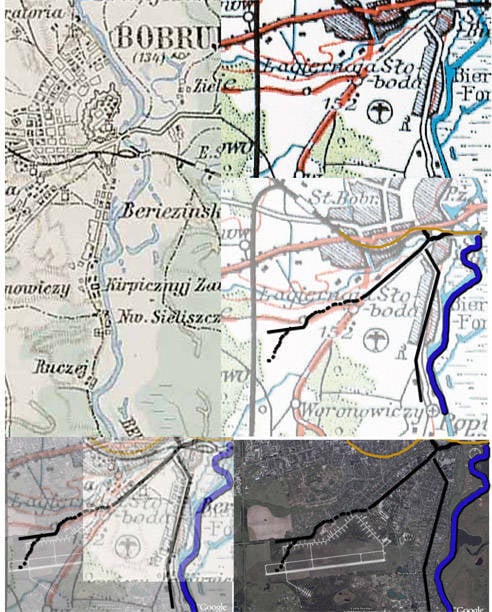
The command of 13, the second BAA, had taken measures in the morning to “unload” the Bobruisk airfield from the aircraft that had accumulated on it, as well as from the combat vehicles that had begun to arrive from the ZOVOVO advanced airfields. During the day, 35 combat Su-2 97-th FBW flew to Minki airfield, operational aircraft 1-th and 5 th AE 24-th SBAP - at Teeki-chi airfield, and 2 th and 4 AE XNUM-X SBAP - at the Telush airfield. Five SBs from the 24 SBAP “in transit” flew over to the Teykichi airfield and another 39 to the Novo Serebryanka airfield. It must be said that this decision was very timely, since already in the evening the Bobruisk airfield was attacked by German planes, but there were not many targets left on it. As a result of the raid, only one SB of the 11 Squadron of the 3 SBAP was lost.
The further course of events and the material movements we are interested in at the Bobruisk airdrome are extremely difficult to trace using documents from the headquarters of the Western Front Air Force, division headquarters and regimental headquarters, and on most days it is almost impossible. Operational summaries of the headquarters of the 13-th dietary supplement and subordinate division regiments for 22-26 June 1941, the year very stingy and concise. In them, as it should be, basically, contains the number of sorties, bombs dropped and downed aircraft. However, the few available data are of great interest.
23.06.41. At the end of the day on June 23, “gulls” led by the deputy commander of the 123-IAP 10-th GARDEN captain Savchenko flew to Bobruisk. They became the so-called “attached group of fighters” mentioned in the 13-th BAA operations report. According to summary No. 3 from 23.06.41 of the ZOVOVO Air Force Headquarters, it is known that:
24.06.41. From Operational Summary No. 3 from 24.06.41, headquarters of 13-th BAA: “Airfield and mountains. Bobruisk was bombarded on 12: 35 -12 planes, on 20: 30 - 7, 21: 15- 5. Dropped on the airfield to 80 bombs of various calibers, the Security Council burned down. "
Documents of the 24-th SBAP report that on that day the personnel of the 3-th AE arrived at Telush airfield without materiel. Thus, by the end of the day 24 of June at the Bobruisk airfield, apparently, there are no operational bombers of the 13 th BAA left ...
25.06.41. From Operational Summary No. 4 from 25.06.41 of the 13 headquarters supplement: “Attached 9 and 153 continued to cover the airfield and mountains. Bobruisk in air battles shot down 1 U-88 ".
26.06.41. From the Operational Summary No. 5 of the 13 Headquarters BAA Supplement: “24.06. in 20: 30 7 Pre-17 bombarded the airfield BobruiskN (altitude, ca. aut.) -800 m. dropped to 40 mixed bombs. 21: 15 5 Before-17 bombarded the airfield Bobruisk at the same height, dropped to 15 bombs. 15: 00 25.06. with the course 270H-1500-tpr-ka reconnaissance of Bobruisk. As a result of the air battle with our fighters was shot down, the type is not installed.
26.06.41. “4: 30 two-88 with 1000 heights m bombarded the airfield Bobruisk. 7: 00 26.06 raided two U-88 on Bobruisk, our fighters were driven off and shot down in the Slutsk area. ”
On the same day, the 160 th IAP 43 IAD was relocated to Bobruisk from Minsk. Having lost most of the aircraft on the ground, on the ground, but retaining the personnel, the regimental headquarters acted independently, effectively leaving the division. Only a few vehicles remained in the combat squadron of the heavily thinned regiment, and the main thing that was required by its commander, Major Kostromin, was airplanes.
In Bobruisk, he was lucky in the form of 10 "gulls" of the 10-SAD team. By this time, the headquarters and personnel of the regiments of the 10-th SAD were sent to the rear for new aircraft. The pilots of the “team group”, apparently, having transferred their cars to the 160-IAP, went after the comrades to the rear “for retraining”. Actually, the 160-th IAP stayed in Bobruisk a little longer. Unfortunately, there are no exact data when it was relocated, but the regiment was already in the area of Mogilyov on June 28.
June 26 Bobruisk airfield was preparing to evacuate. In fact, this day was the last when the Red Army Air Force planes operated from it. The following operation, No. 6 from 28.06.41 headquarters 13, the BAA, marks the new location of the headquarters of the division - Novo Serebryanka (the main airfield of the 121 SBAP). The 24-th SBAP was redeployed there from Teykichi and Telush airfields. The evacuation of the division headquarters and the 160-IAP probably occurred on the night of 26 on June 27. This is indirectly confirmed by the absence of a divisional headquarters’s operational statement for that day, although the regiment’s combat missions carried out.
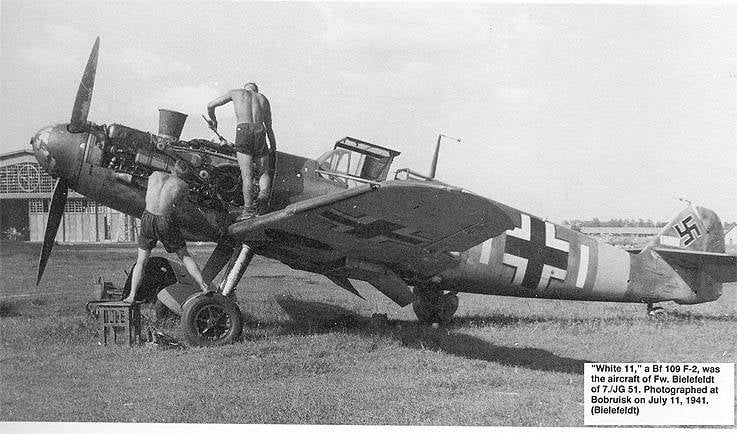
And in the evening of June 27, the Bobruisk airfield turned into a battlefield. From the report of the commander of the 47 Infantry Corps to the commander of the 4 Army, the actions of the Corps Control Department from June 23 to July 3 1941 says:
28.6.41 during the whole day the enemy under the cover of machine-gun, mortar (large caliber) and artillery (105- and 150-mm) fire throughout the depth of our defense made attempts to cross to the east bank of the r. Berezina in the area of the railway bridge Bobruisk, showing special efforts to crossings on our
on the right flank in the Shatkovo area and on the left flank in the House-new area, Kholm. Intelligence data confirmed the spread of the enemy — individual groups of motorcyclists, tanks and armored vehicles along the Bobruisk-Minsk road to Yeloviki and patrolling individual tanks, motorized infantry to Shatkovo and Kholm; In addition, there was an accumulation of motorized infantry and tanks in the area of the Bobruisk airfield. ”
CONCLUSIONS
To 22 June 1941, a huge number of aircraft - 154 machines, including 140 combat aircraft (58 SB, 50 Su-2,28 Pe-2 and 4 Il-2), and six training aircraft SSB and eight training aircraft accumulated on the airfield Bobruisk. communication y-xnumx. To the credit of the commander of the 2 dietary supplement Polynin and the chief of staff of Tel-nov, they correctly assessed the situation and by noon on the first day of the war they dispersed the entire 13-th and 24-th BAP unit across field airfields. As a result of these actions, the Germans failed to achieve serious success with repeated attacks from the Bobruisk airfield (from the bombings, three SBs and one Su-97 were lost). Unfortunately, the rear services did not manage to evacuate the malfunctioning materiel from the airfield; the swift advance of the Germans who captured Bobruisk 2 Jun did not allow it ...
In the context of these events, that conglomerate of Soviet aircraft, which can be seen in the German photographs of the Bobruisk airfield, cannot but interest fans of military history and the history of military aviation during the Great Patriotic War. The documents that have reached us can shed light on the ownership of military vehicles, captured by German soldiers in the summer of 1941, at the Bobruisk airfield. They are also proof that these aircraft were on the airfield as a result of hostilities that led parts and formations of the Western Front from 22 to 26 in June 1941, the general retreat of the front forces and the urgent relocation of its air force.
PHOTO ANALYSIS
It is worth noting that in the reconstruction of the airfield, in addition to snapshots of 24 aircraft SBAP, which have a distinctive sign in the form of a characteristic forked keel cap from the time of the Winter War, DB-ZF with a tactical number 11 of red color played an important role. It is with this aircraft that a large number of pictures are taken that gave a holistic view of the objects located at the airport: both hangars and buildings, and airplanes.
The most complete picture, conveying an idea of the types and number of vehicles located at the aerodrome, is shown in photo No. XXUMX. This is a view from the rear of the Pe-1, in which the consoles were dismantled, along the line of airplanes standing on the platform bounded by the highway, asprava — two hangars (let's call them No. XXUMX and No. XXUMX). The side of the site opposite to the location of the site forms a horseshoe-shaped yard at the expense of the standing buildings and the hangar No. XXUMX.
The photo clearly shows that the planes are along the road, in order: Pe-2 with undocked planes and engines removed; light gray SB without planes; behind its cab, the I-16 (without engine and planes) and I-15 bis chassis (also without engine and wings) are visible; light gray sat with tunnel radiators and Pe-2 planes leaning against it, then I-153 (with skinned fuselage and without planes), followed by landing gear clearly belonging to I-15bis; Further, three Su-2 (painted according to the scheme “green top, blue bottom”), behind them you can see the keel of I-16 (with number 5); further DB-Zf (light gray, tail number 11) and behind it another light gray SB.
Behind the formation of the aircraft, the end of the building is visible, to the right - two hangars, along which the planes also stand and their fragments lie: light gray I-153; at the edge of the hangar I-15bis; behind him "lies on the stomach" of the Security Council (he has a "cap" on his keel); Il-2 stands in front of it, and a little to the right, closer to the hangar, is a light gray I-153 (without the left upper plane); to the right lies the tail section of the SS (tail No.4 and white “forage”) and the far right U-2.
In the center of the site, in the foreground are I-15bis and I-16. In addition, between the aircraft throughout the site are viewed numerous parts and fragments of aircraft, poorly identifiable from this angle.
Analyzing the collected photos, among the numerous remnants of the aircraft can identify several machines. Let's start with the Su-2, which we saw in the first photo. The photo №2 - close-up of the Su-2 clearly shows the white tail №4, and also it is clear that the photo was taken later than the first one, the engine was dismantled at the car.
The next object is 16 type X-NUMX (photo # 5), which is located between Su-3 and DB-Zf.
The fuselage of the aircraft is broken in front of the keel, the red tail No.5 is clearly visible in the white edging, another detail is the removed landing gear.
Now we turn to the pictures DB-Zf №11. They found a few pieces. As a result of the work, it turned out that the plane was originally standing on the airfield, and then it was rolled up along concreted taxiways and placed between two hangars (one of them is # XXUMX, the next # XXUMX, it is clearly seen that the hangars have a different design, one of them 2 - double).
In the end, the plane once again dragged and put in a common "line" at the edge of the road. During this time, German amateur photographers managed to shoot it, giving us the opportunity to look not only at this beautiful car sparkling in the sun, but also at the airfield objects and other aircraft that were in the frame, which became the main elements for linking the scattered images. For example, in the photo №5 you should pay attention to the different colors of the nose of the SB and its fuselage. Apparently, this is a former CSS, on which the navigator cabin was mounted and thus turned into a combat one. This, by the way, is confirmed by the documents of the 24 SBAP. After heavy losses in the first days of the war, they began to convert the CSS into combat aircraft.
While DB-Zf was rolled to the parking lot, between the hangars, in one of the pictures in the foreground, a U-2 with a red unit on the steering wheel got into the frame, and the UT-1 in the left in the background (see Photo # 6). This photo also shows hangar No.3.
The next one is an aircraft, in which there is a sufficient number of photos for identification - IL-2 with a white “two” on the tail. Initially, this car was on the airfield (Photo # 7), and only some time later it migrated to the general group of vehicles on the site and took place at the hangar No. XXUMX (Photo # XXNX).
In this picture you can see that the number on the rudder is not drawn by stencil, but what is called “by eye”. In addition, the design of the “double” hangar No.2 is also clearly visible.
The next photo №9 returns us to the Pe-2, from which the site was photographed with the technique.
It turns out that the extreme in this group is the SB (painted according to the scheme: “green top, blue bottom”) with screws removed, and between it and Pe-2 stands DB-Zf. The photo clearly shows the characteristic two-story building with a pipe and side extensions, between it and the planes one can see a small path - the exit from the main road.
Another shot, but already taken from a slightly different angle, is due to the SS fuselage lying on the other side of the yard at the edge of the hangar (photo # 10). On the right, along the wall of the hangar, three semi-disassembled U-2 are visible, and on the contrary, the light gray SB (to which Pe-2 cantilevers are attached) clearly shows the tactical mark on the rudder - the red letter “E”. There is another snapshot of the same SB (photo # 11). The letter "E", instead of the tactical number, was used on aircraft of squadron commanders.
Viewing another photo gives us a new perspective, unnoticed before, because of the planes on the site. In the photo №12 you can see that there are more airplanes behind the light gray CSS ...
The next picture clearly shows the broken during the bombardment of the airfield of the Security Council, painted according to the “green top, blue bottom” scheme. It has a white tail number 2 and a characteristic red “foil”. Before him are fragments of another Security Council in a light color (Photo # 13). The burnt SS with a tail number "3" (photo # 14) also, apparently, received a direct hit by a bomb.
The light gray SAT with the red “five” on the tail has an interesting camouflage in the bow, consisting of green spots painted with a brush. In the photo №15 you can see that this is a car of the early series, with frontal radiators of motors.
An 16 with a white number “13”, painted according to the standard scheme, was originally captured in the center of the common area (Photo No. 16), near the tail part of the SB No. 4, but later it was dragged to the horseshoe-shaped courtyard.
In the course of the study, we paid attention to another group of photographs that appeared on the Internet without any reference to the location of events, but along with the pictures of the already described aircraft of the SB aircraft with tail E, Y-2 No. XXUMX and IL-1. It contains the X-NUMX No. 2 I-153 images not previously seen with the radio antenna mast (photo No. XXUMX and No. XXUMX). “Attach” this plane accidentally helped all the same DB-ZF №14. A close examination of his photograph in the lower left corner was detected by the 17, and in the background - the SAT with the engines removed, who later joined the DB-Zf series with white No.18 and Pe-11. In addition, the pictures present the same tree, standing on the road in the background.
Now we turn to the inner side of the courtyard between the hangars No.2 and No.3. In the photo No. 19 one more light gray I-153 with tail No. 2 is visible, which has no engine and left wing consoles, SB in green-blue color and I-16 type 29 with white tail number “8”. In addition, a large number of fragments and parts of various aircraft are scattered around the site.
After analyzing the information we have, we have drawn up an approximate plan for a part of the aerodrome that has fallen into the lenses of German cameras. Alexander Korneev helped us very much in linking the buildings on the ground, who sent us a modern photo of that place (photo # 21). It turned out that the characteristic white two-story building with a pipe and side extensions partially preserved to this day. Until the beginning of the 1990-ies, it was an educational building, and now local residents are gradually dismantling this historic building into bricks.
Thanks to the pipe, the house is clearly visible on satellite images (in the photo No. 22 it is shown by an arrow). This helped to more accurately represent where the airport buildings were located in 1941, the hangars No. 1,2,3,4 and the two buildings that form the horseshoe-shaped yard (see the bottom of the photo No. XXUMX). Unfortunately, to this day neither the building nor the hangars have been preserved.
CONCLUSION
As a result of the study and comparison of archival materials with photographs of German photographers, we had the opportunity to establish the ownership of a part of the aircraft recorded by cameras at the airfield Bobruisk.
Let's start with the 13 machines of the BAA and the airplanes that have accumulated at the Bobruisk airfield by June 22. SAT with the "overhead" on the keels - this aircraft 24-th SBAP. These tactical designations appeared on the machines of the regiment during the Winter War. There are about a dozen of these cars left on the aerodrome, four of them have the numbers 2, 3, 4 and one number is not identified - the chicks are clearly visible. Su-2 - aircraft 97-th BBO, other regiments with such a materiel in this direction simply did not exist.
The light gray SAT with tail No.5 and frontal radiators of the motors most likely belonged to the 121 SBU 13. It was this regiment that was armed, as noted in its documents, with the machines of the “old series of the Irkutsk plant”. The SB with the letter “E” on the tail most likely belonged to 39-th SBAP 10-th GARDEN (red line along the upper edge of the rudder differs from the “NPC” 24-th SBAP). The CSS aircraft belonged to the 24-th SBAP.
The IL-2 is a machine designed for the 74 th SHAP of the 10 th GARDEN, and the Pe 2 is one of the 28 airplanes that overtook the 13 and 16 SBAP.
Aircraft DB-Zf from the 3 th Air Corps RGC. According to the documents it is known that one such bomber from the 98-th DBAA produced
an emergency landing in Bobruisk due to combat damage in the evening of June 22. Which part belonged to the second DB-Zf, according to the documents, it was not possible to establish, but only 98-th and 212-DBB aircraft operated in this area, so it can be assumed with a high degree of confidence that the vehicles were from these regiments.
Already on June 22, parts of the border areas began to relocate to the Bobruisk airfield. The main "guests" were aircraft 10-th GARDEN. This connection, due to heavy losses from enemy air raids, was forced to relocate first to Pinsk and then to Bobruisk. And if everything was more or less clear with the bombers, 16 SBs became part of the 24 SBAP and flew to Teykichi and Novo Serebryanka airfields, and one, apparently, remained in Bobruisk, then with fighters and attack aircraft everything is much more complicated.
In the 10 SAD documents there is a mention of the relocation of June 22 to Pinsk from the aerodrome Named Aircraft of the 123 th IAP (according to various data 10, 13 and 18 pieces) and from the Pruzhany aerodrome (there 33 IAP and 74 ShAP were based). aircraft owned by the division.
This is confirmed by Captain Savchenko, Deputy Commander of 23.06.41 IAP, in his report to the Zapovo Air Force Command from 123: “10 SAD headquarters evacuated I don’t know where I sit in Pinsk leading teams of fighters of national teams (...) waiting for instructions on what to do next.”
What planes were in these groups, neither in documents 10 SAD, nor in documents of its regiments is not specified. Unfortunately, the few documents of the 10 th division and its parts poorly reflect the events of June 1941 of the year, and there is practically no data either on the losses or on the relocation of the material part.
33-IAP on June 22 had 25 and 16 types 5, 6 I-153, 2 MiG-3,4UTI-4,4UT-1 and 2Y-2 (according to the documents of the regiment, all the machines were disabled) However, all the documents of the 33-IAP (and this is indicated in the regiment's affairs) were handed over to the military registration and enlistment office of Pruzhany on June 22. So, everything that is in the regiment's fund in TsAMO and concerning the events of June 1941 of the year is written backdating. 74-th SHAP as of 22 June had 47 and-15bis, 15 and-153 and 4 Il-2. According to the 10 th GARDEN combat log, this regiment lost all its materiel at the Maly Zvody airfield on the very first day of the war. However, judging by the documents of the regiment itself, from 22 to 28 June, it made 15 sorties, losing 28 aircraft and four pilots.
Another evidence that part of the 33 and 74 regiments might have been in Bobruisk is a comparison of the aircraft photographed by the Germans at the Pruzhany airfield and photos from the Bobruisk airfield. In the photographs, we noted the conformity of types (I-16 type 5, I-15bis and I-153) and the same color schemes of the aircraft.
Thus, there is reason to assert that part of the 33 and 74 regiments still reached Bobruisk and, as part of the fighter group of captain Savchenko, participated in the fighting until June 28, and the lack of documents about this is the result of confusion and chaos the first days of the war ...
Now let's go directly to the aircraft: And-16 type 5 - belonged to the 33-IAP. On photos from the Bobruisk airfield, at least five such aircraft. All have the same color, as well as the shape, placement and color of tactical numbers. All this indicates
on the fact that planes are from one unit. And-15bis - undoubtedly belonged to the 74-th SHAP. There were simply no other regiments with such a mate. E-153 with a green top and a blue bottom, most likely, also from Pruzhan, but which of the regiments — the 33 or 74 — he belonged to is impossible to determine. UT-1 also clearly belonged to the regiments of the 10 th CAD, as there were no such aircraft in the 13 th combat supplements.
Determining the ownership of light gray I-153 initially did not cause any particular problems for the authors, since according to 10 documents, the SAD traced the relocation of 123-IAP aircraft to Bobruisk 23 June 1941. However, in the process of working with photographs of airplanes captured by the Germans at the Minsk Losditsa airfield, Igor Zlobin drew attention to the same color and writing of tactical numbers on the “Seagulls” from the Bobruisk airfield and the Loshitsa airfield.
After working out the documents of the 160-IAP in TsAMO, the guess was confirmed! 160 th IAP after the fights in the area of Minsk 26 June 1941, flew to Bobruisk. In the 43 IAD documents, which included the 160 IAP, there is information that 10 I-153 from 129-IAP were received by the regiment for the replenishment. Apparently, these are the planes of the national team of Captain Savchenko, and the regiment number could well be confused with 123 and 129. Moreover, the documents of the 129-IAP are quite detailed, but they don’t mention any transfer of equipment. Thus, the light gray “Seagulls” with red tail numbers are airplanes of the 160-IAP. There are photographs of three such aircraft (No. 2, 12 and 14) left due to malfunctions on the field of the Bobruisk airfield.
The last figures in our investigation are the two I-16 later series. Unfortunately, it was not possible to establish the ownership of these machines. But it is most likely that they flew to Bobruisk either with the “Seagulls” of the 160-IAP from Minsk (which means they belonged to the 163-IAP), or from Baranavichy after the defeat of the local aerodrome by German aviation (then they were from 162-IAP) . In any case, this machine 43-th IDA.
As is known from the documents of the Red Army Air Force Management Fund, the 162 and 163 IAP were armed with “donkeys” of the later series. Two other regiments of the Air Force Zapovo, armed with similar machines (122 th IAP 11 th GARDEN and 161 th IAP 43 th IAD), were far from Bobruisk, and their cars could hardly be there. In addition, it is known that the 122 th IAP was defeated on June 23 in Lida, and the Germans destroyed the last three of their cars at the Machulishche airfield near Minsk. The fate of each aircraft of the 161-IAP can be traced to the surviving loss record of the materiel of this regiment: not one of them was "noted" in Bobruisk ...
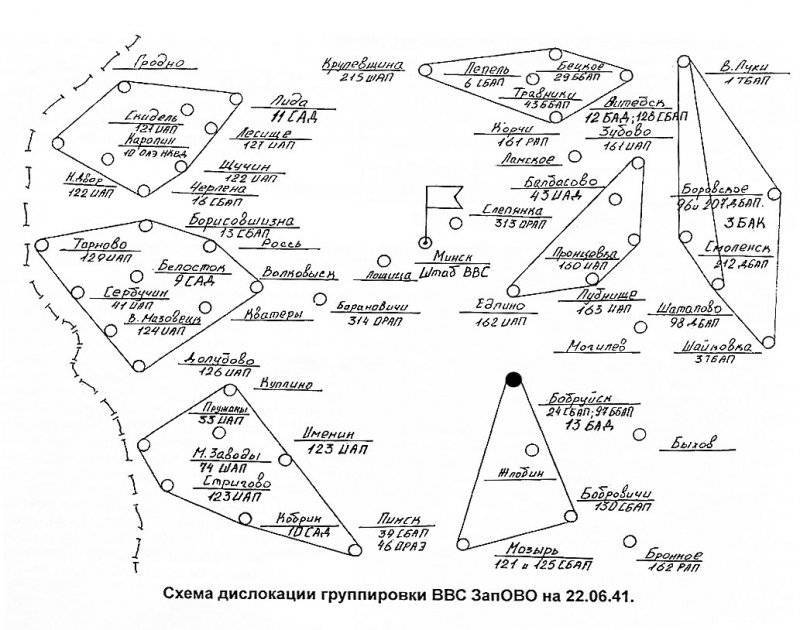
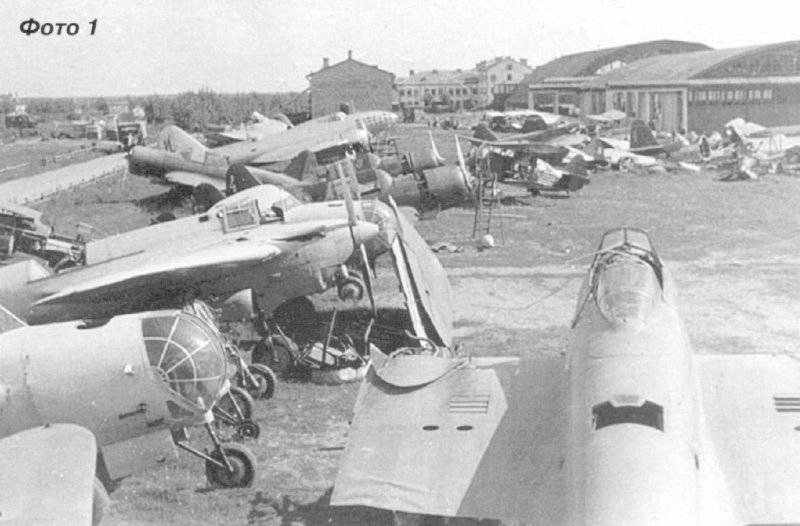
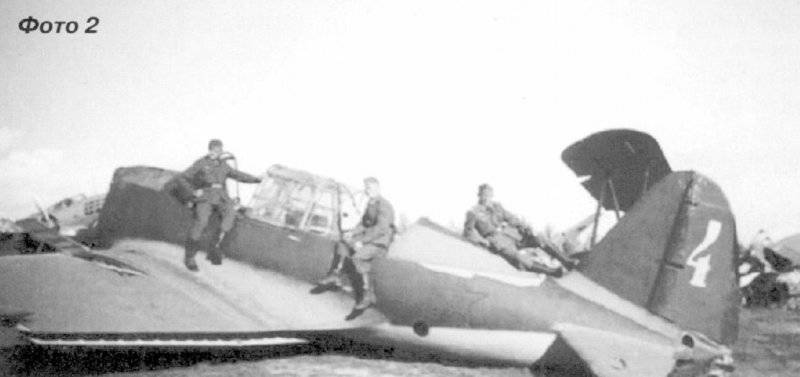
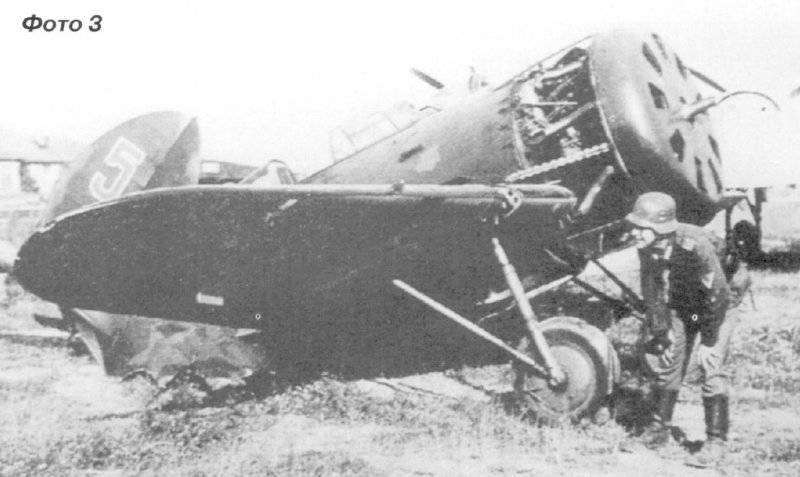
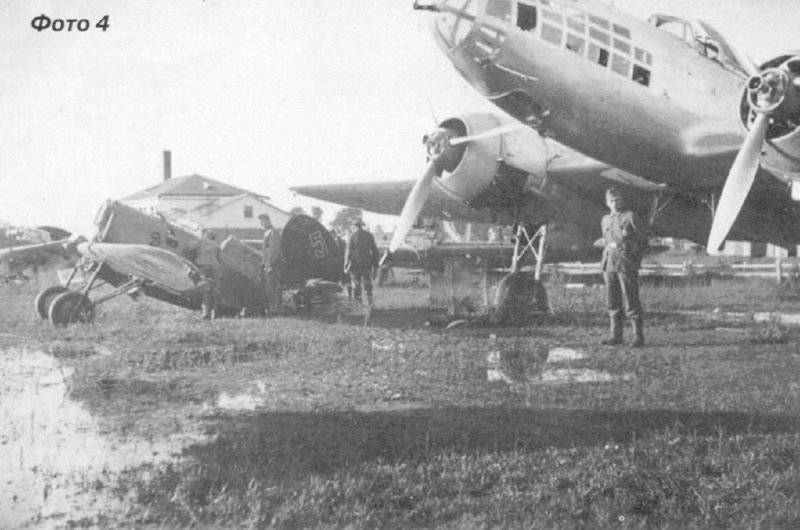
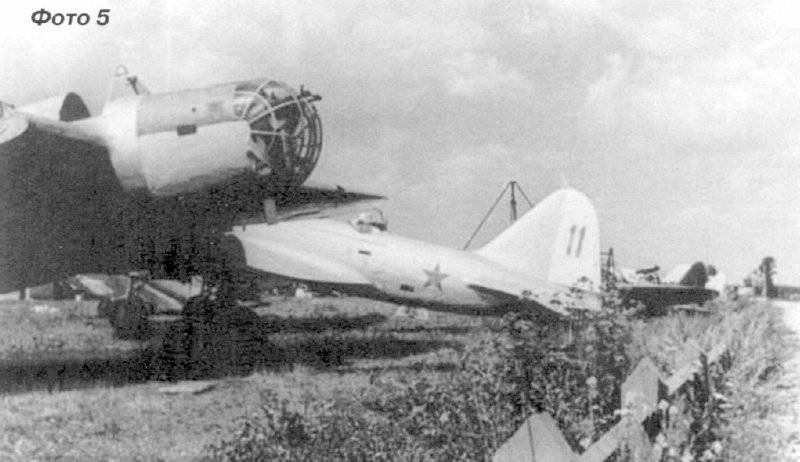
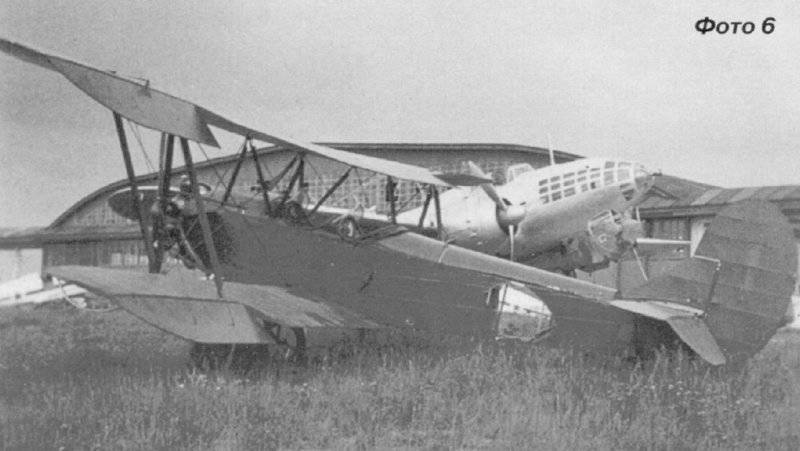
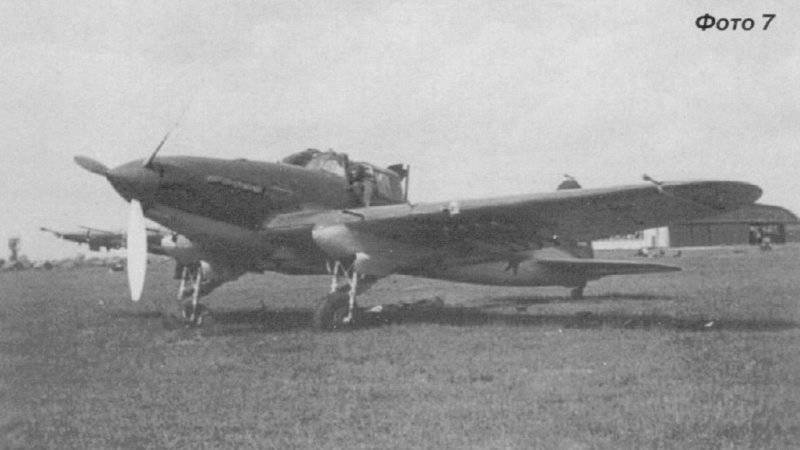
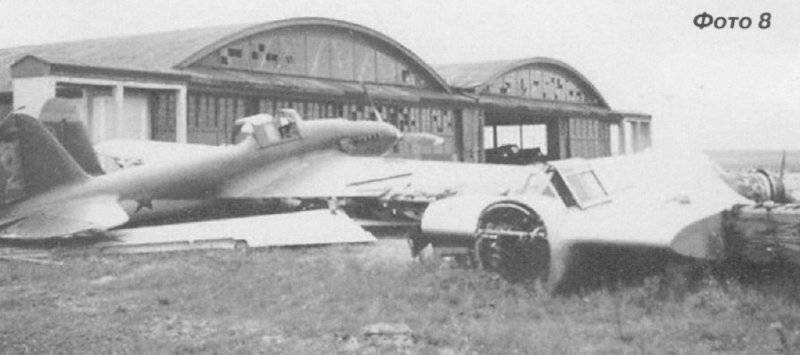
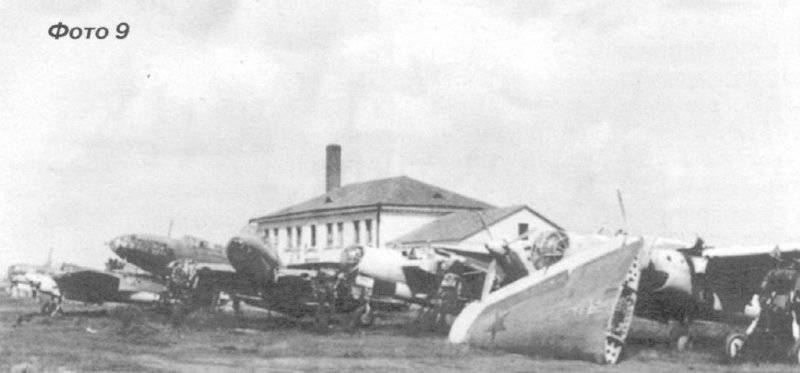
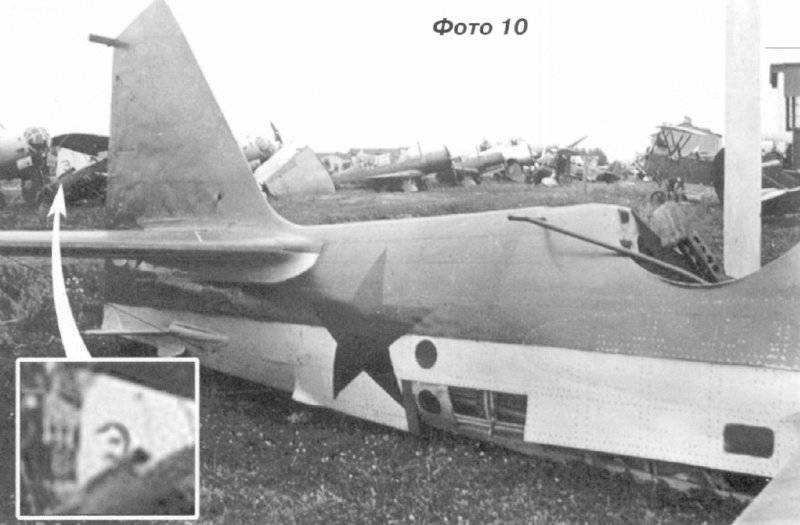
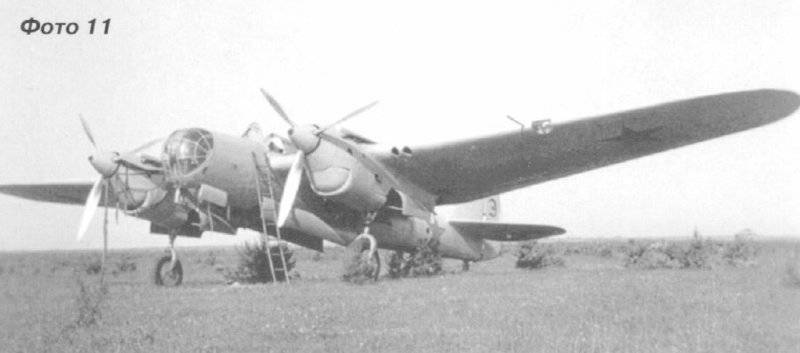
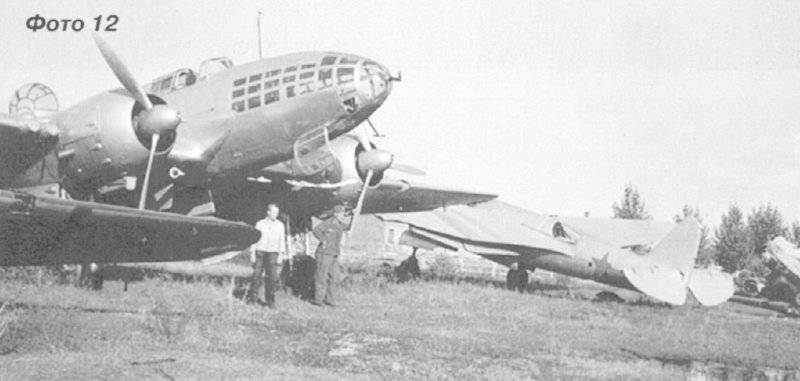
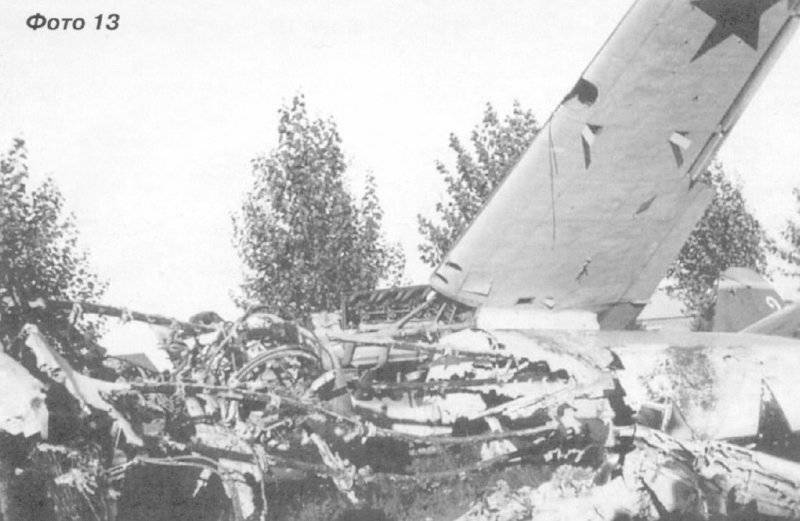
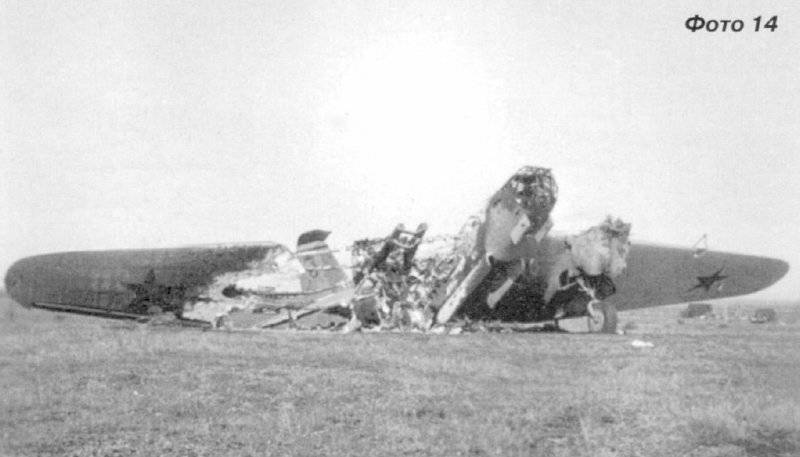
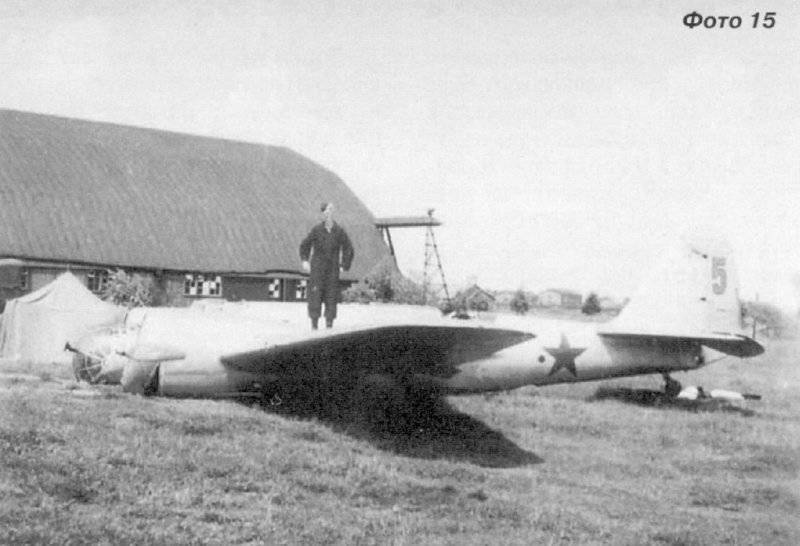
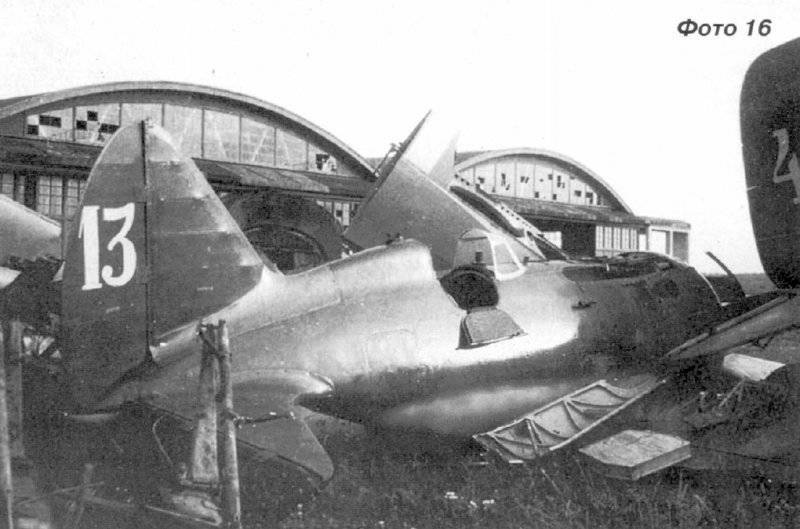
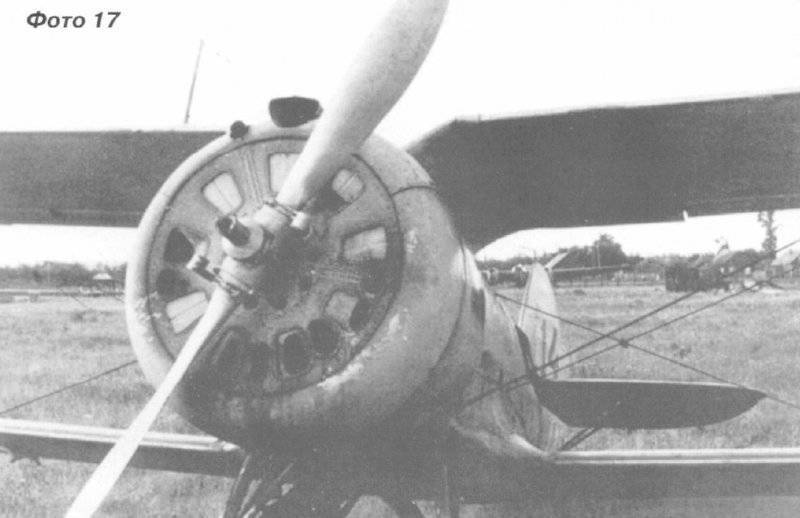
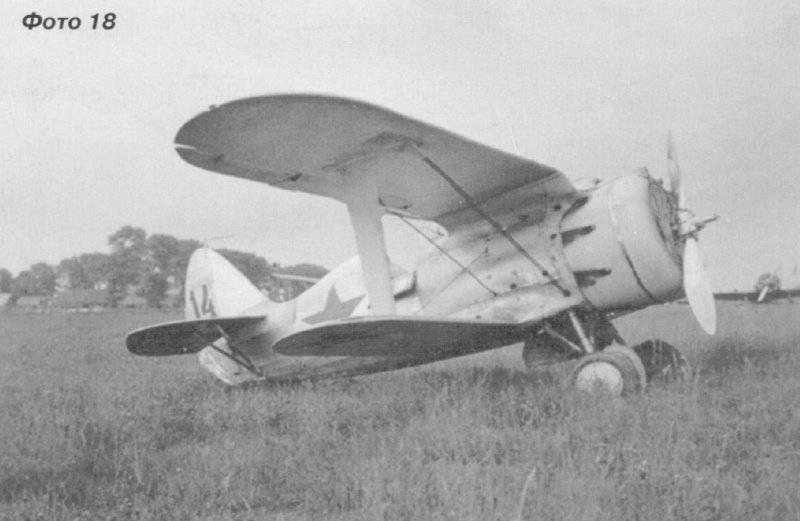
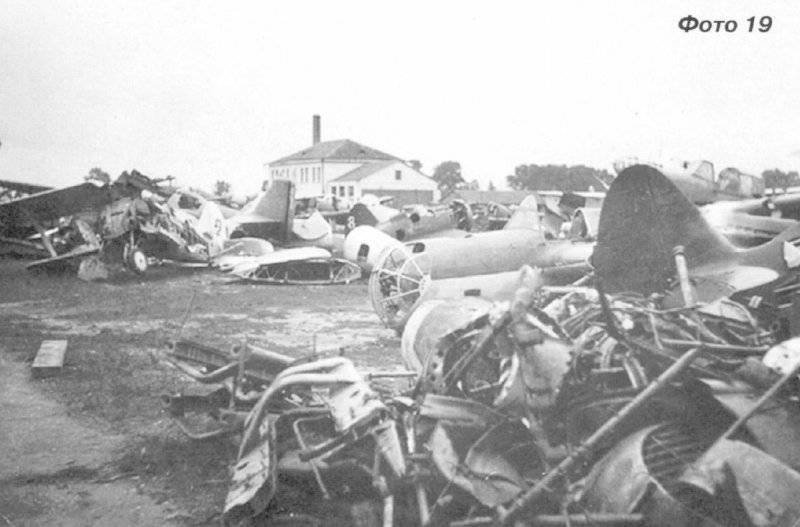
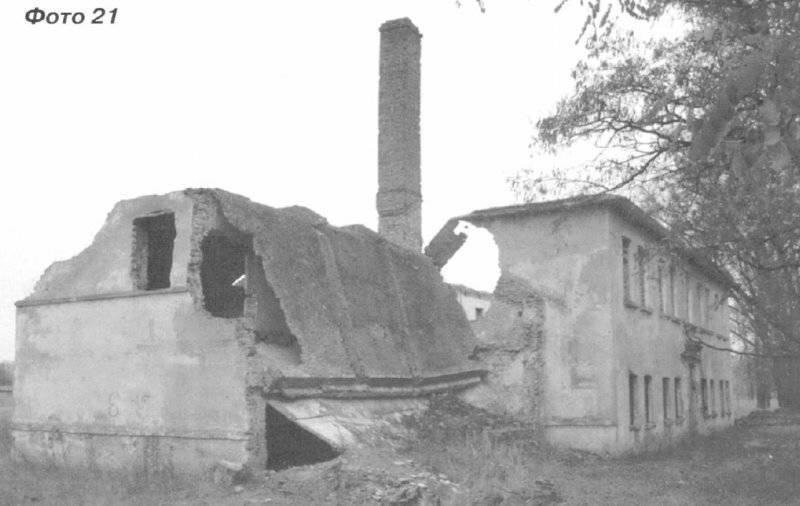
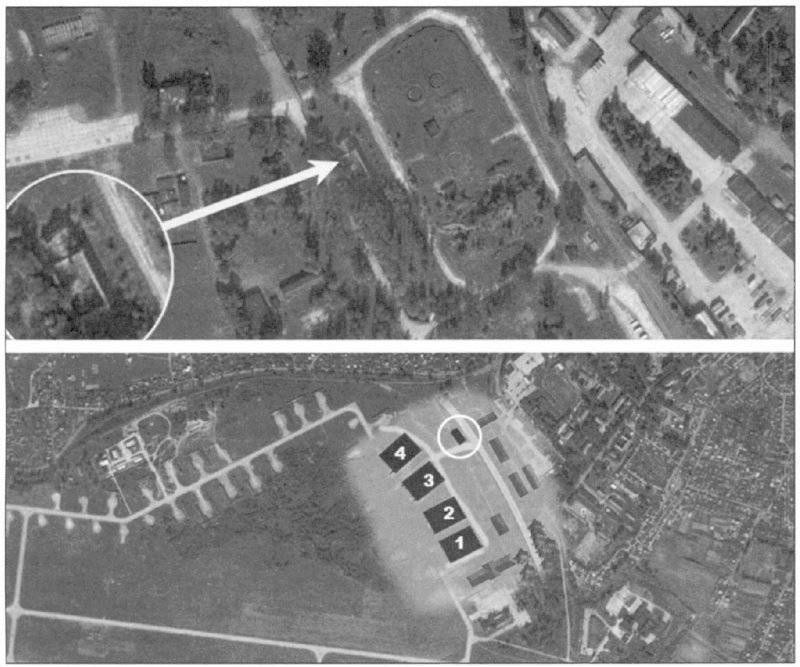
Information